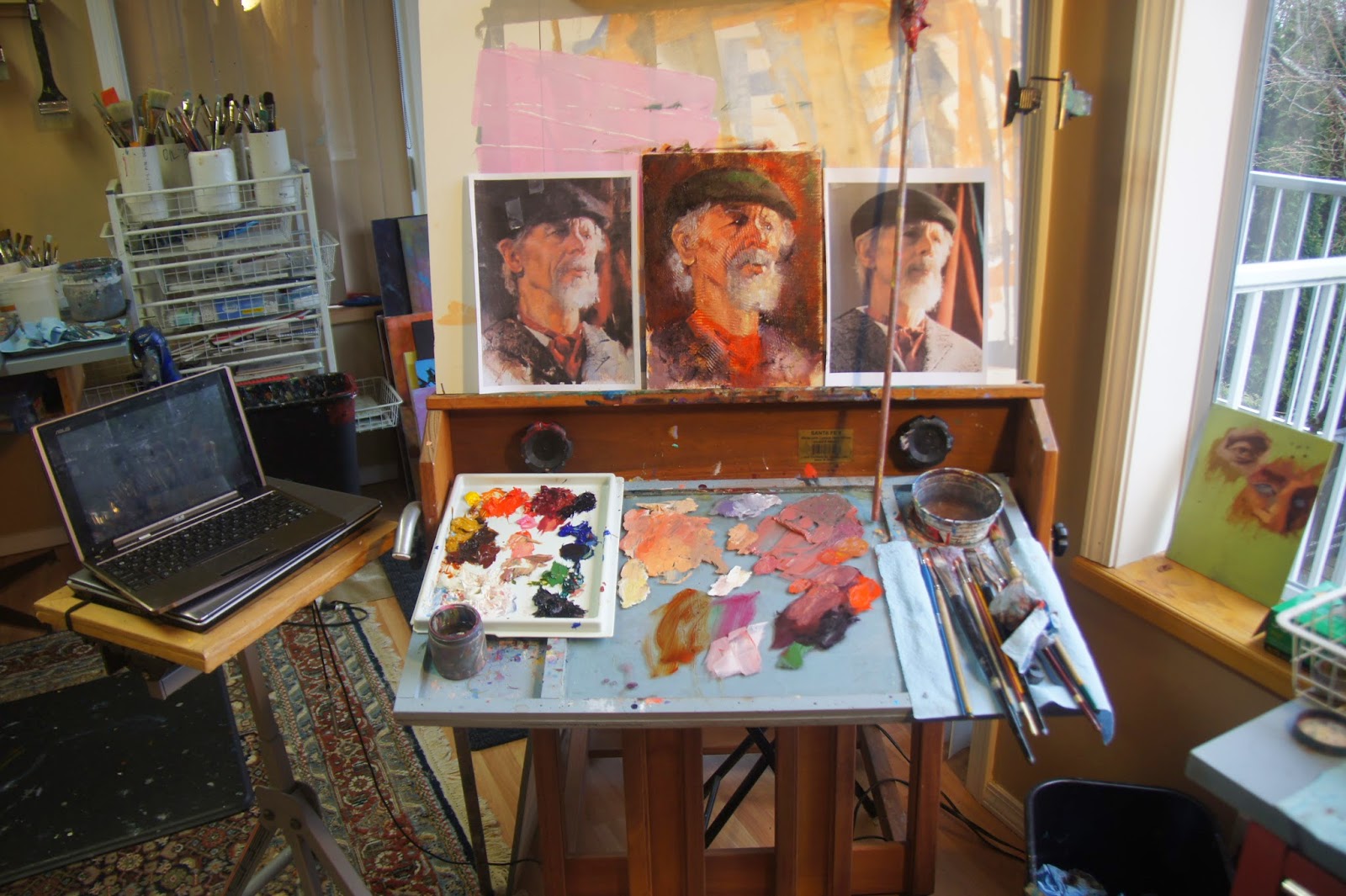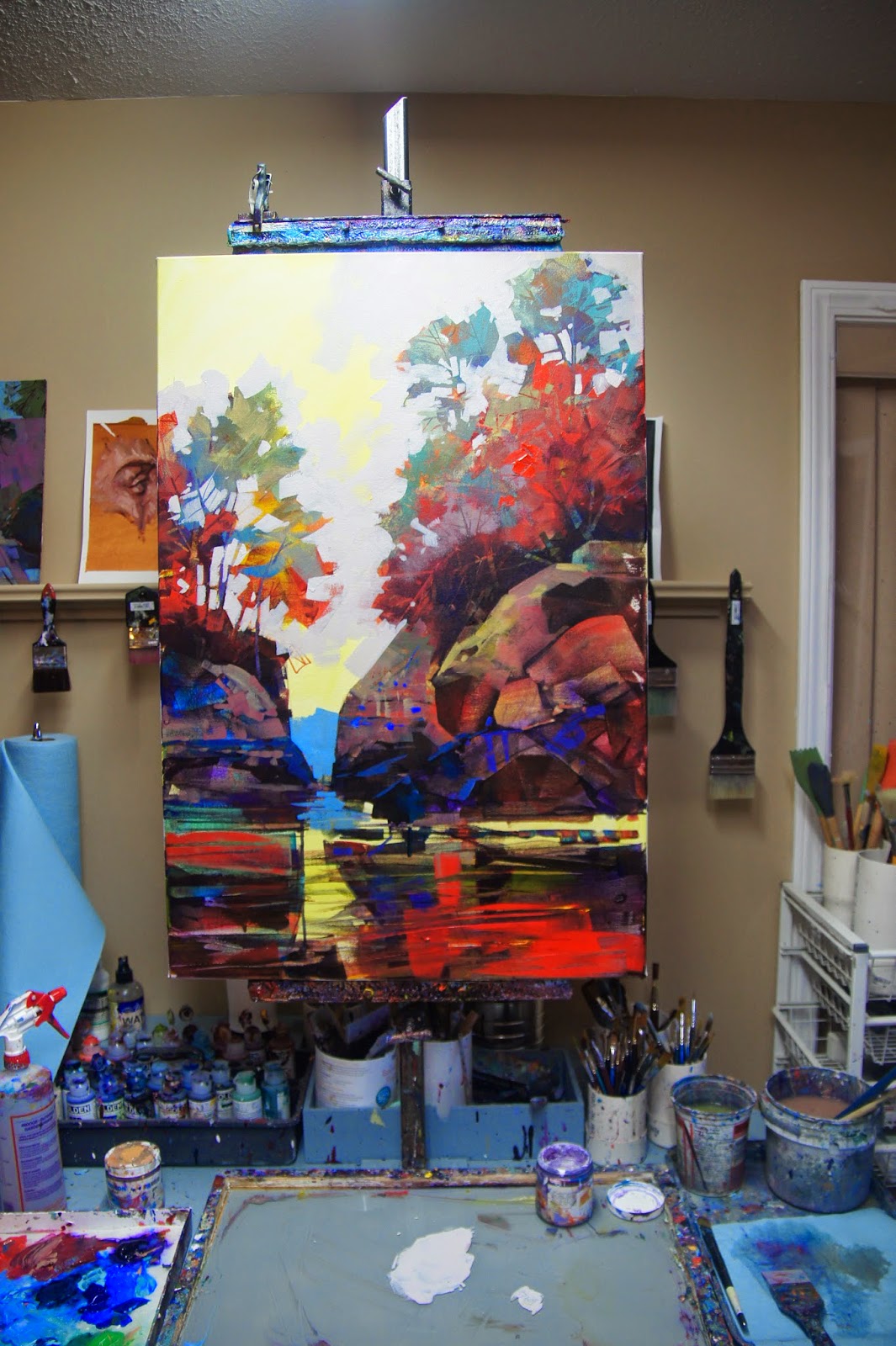If you
follow my Facebook page you will know I have been out of commission for the
past month. Knee replacement - resulting from an old rugby injury almost 50 years ago.
So to fill the time I loaded up on new books and prepared to not be painting for the month. Didn't take long until that got stale.
Recently I had been considering the Watts Atelier on-line courses but felt I did not want the expense or commitment. But then this seemed like a good time and a good way to kill the time. And for a reason I cannot understand I seem to keep needing to play with portraiture and figurative painting every once in a while. So I took a look.
Recently I had been considering the Watts Atelier on-line courses but felt I did not want the expense or commitment. But then this seemed like a good time and a good way to kill the time. And for a reason I cannot understand I seem to keep needing to play with portraiture and figurative painting every once in a while. So I took a look.
There are a growing number of on-line learning opportunities. For most you pay by the course or by a monthly fee giving access to a selection of videos. The Watts approach is different: $200 per month but with full access to a growing selection of programs each with many courses. Pay extra and you get personal mentoring from one of their excellent instructors - or Jeff himself. Initially that seemed expensive and I hesitated. I wanted to be able to buy a course, download and view at my leisure. But once I took a look and knowing I had an open month ahead of me I decided to register for one month to give it a try. And I was glad I did. The program is excellent and growing in scope. It is designed as a complete learning experience. If I wanted to it would take me from basic drawing skills through to many different approaches to portraiture and figure painting - all done very well. It is comprehensive. In addition to the excellent videos there are very good pdf notes to download with each section.
I spent 6 months at the Atelier , near San Diego, a number of years ago. It was great but very expensive. This would have been a reasonable alternative.
While my initial interest was in playing with portraiture again, the landscape program also impressed me. Jeff Watts dad, Robert has two courses on design, one in particular on Composition and Staging, that are excellent. He is a great teacher - as is Jeff. So I watched and re-watched some of the videos then at week two was able to drag my butt down to the studio. Set up a small oil work space and painted seated (which normally I hate doing) for a few hours each day. And I did as many of the exercises as I could. I re-kindled my love- hate relationship with portraiture. Love to be able to be good at it but hate the commitment it takes. But just the exercises working on tight control, no matter the subject, are good for me - as my landscapes seem be becoming more serendipitous the more I paint.
 |
| Excellent quality videos |
 |
| Portraiture has three phases each with about a dozen courses - and more to come |
.png) |
| A few of the courses in Phase II portraiture |
 |
| Videos show the palette and reference |
 |
| Excellent reference material to work with |
 |
| pdf notes |
 |
| Robert Watts Composition and Staging course - excellent |
Its been four weeks since my surgery, I am doing well. Most days painting at least 4-5 hours and all of it has been playing with the Watts programs. My interest is in trying to capture a bit of a likeness but more importantly to make it interesting using colour, brush strokes and texture. I made dozens of exercise 6x8s and a few 8x10.
 |
| My set up. Videos on left and using printed pdf for reference. |
 |
| A few 8x10 examples. Notice the heavy texture on a few done with acrylic molding paste - just playing |
So am I now any closer to being a portrait painter? No, never going to happen. Its something you need to do every day if you are ever going to be good. But I have enjoyed it and it has helped move me forward.
My plan is to finish this first month, get back to my acrylics, then at some point re join for a month as new courses are added.
Summary: excellent programs, well planned and taught, quality format, good value.





































